Resources

When our courses went online in the spring, many of our students kept their cameras turned off in class. It was eerie. When my students wouldn’t say anything, I felt like I was speaking into a void, and my imagination started running wild. Was anybody else really out there? Maybe they had all just . . . left? Even when most students were talking, I wondered about those who weren’t. Were they still paying attention? I had no idea. It’s tempting to address this problem by adding a strict camera policy to our syllabi for the fall: Students must keep the camera on during online classes. Several of my colleagues are doing just that. I understand the impulse, and I agree that we need to find ways to help our students stay focused in our online classes. Making sure that we can see them and that they know it would be a simple start. But let’s think more before we add a camera policy to our syllabi. Why do students want to turn their cameras off in the first place? I’m sure some of them do it so that they can goof off without their professors noticing. But not all of them: Some students are embarrassed about what people will see in their homes: Poverty. A mess. A crowded space. A virtual background will hide all that, but students can only use one if their computer meets certain system requirements. On an older computer with older software, the virtual background won’t work. And of course, poor students are more likely to have an older computer. The camera makes some students acutely self-conscious, which makes sense given that it broadcasts a closeup of one’s face to the entire class for the entire class period. My favorite description of the experience is from “Why Zoom is terrible”: “You feel like every eyeball is on you, like a very intimidating job interview." I share this experience. Honestly, just reading the line from the New York Times makes my heart race. After the first painful month of Zoom meetings, I began turning the camera off as often as possible. It made the meetings less exhausting, and it became much easier for me to focus and to listen to what people were saying. If students are feeling overly self-conscious, they won’t learn well and won’t speak much. Are there other reasons for keeping the cameras on? We might think that seeing each other’s faces improves communication. In non-virtual face-to-face interactions, it does. Without noticing it, we process and interpret a flood of subtle facial cues, adding to what we learn from the other person’s words and tone of voice. But on Zoom, the imperfect video feed obscures those crucial small cues. We just don’t see the faces well enough, and so, we get faulty cues which can mislead us. We might communicate better with the cameras off. Requiring cameras to be on probably helps some students pay attention and the cameras allow us to see that our students are still there. But seeing their faces probably doesn’t improve our conversations, and the cameras make other students self-conscious, and thus less likely to participate and pay attention. So, can we find other ways of checking that our students are paying attention? I think so. In my class, we’ll develop a set of norms together. I plan to ask them: How do we normally show each other that we’re paying attention and that what others are saying matters to us? If we have cameras off, most of our usual ‘I’m listening’ signals won’t work, so what should we do instead? I’m looking forward to seeing what they come up with! In the meantime, here are some ideas of my own for confirming that they are paying attention: Gentle cold calling (soft-ball questions). Have them type questions, comments, and answers to questions in the chat. Mini quizzes or mini papers partway through class. Exit slip at the end of class: “What was the most important thing you learned in class today and what question do you have?” All of these will be low-stakes assignments; and students will get full credit if it looks like they paid attention. Like the rest of us, I am looking forward to seeing my students’ faces again, but my Zoom class is not the right time for that. I’ll save that for office hours and small group discussions. In class, I’ll settle for their profile pictures and their voices. Note: I wish the idea about developing a set of norms was my own, but I got it from one of my esteemed colleagues at Stonehill.
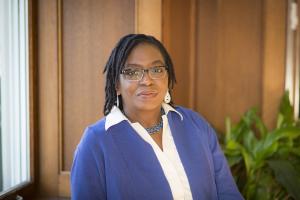
Being a professor during this pandemic has led me to several Wile E. Coyote moments. Looney Tunes character, Wile E. Coyote makes elaborate plans and employs complicated methods to achieve a singular goal—catching the Road Runner. One running gag involves the coyote falling from a high cliff; the coyote is so preoccupied catching the road runner that he runs off a cliff but doesn’t realize it for a moment. He then looks down, realizes that there is no ground beneath him, and falls. That moment that he looks down and sees that there is no ground under him is what I refer to as the Wile E. Coyote moment. He is so busy running and chasing that he does not realize that something fundamental has changed, and he can no longer run in the same way that he did before. Several times while teaching during this time of crisis, I felt like I was trying to run on air, mostly because, I too, was chasing a singular goal—normalcy. With so much turned upside down, it is understandable that we would all want some things to remain unchanged. I realized, though, that the classroom, and the teaching life in general, was not the place I would find normalcy. At first, I focused on changing my physical classroom course to a virtual classroom, but I did not stop to rethink my course that had been online all semester long –-even though those students were also experiencing a major context change. That’s when I realized that I was trying to run on air. When I think ahead to my weeklong concentrated course, still envisioning it as a completely in-person class, I am setting myself up to run on air. When, as collective faculty, we are leery of changes to policy for fear of loosening any standards and worry about precedent that will be set, we are trying to run on air. Wanting a sense of normalcy is very different from pretending that things are normal, or that we can continue to do things the way we have and our new normal will adjust around old rules. Teaching in times of crisis means realizing that in times of crisis, the rules are different. And in prolonged crises, the rules must be made up as we go along. Old ways of thinking no longer serve us—they will leave us running on air. There was one time when the Coyote caught the Road Runner. But as he was chasing, he did not realize that the Road Runner had gotten much larger. This was no longer the Road Runner that he knew. Nevertheless, he pulled up to the Road Runner with his knife and fork, realized that it was too large to eat, turned to the viewers, and angrily held up a sign to the audience: “Okay, wise guys,--you always wanted me to catch him–now what do I do?” In this time of pandemic, our classrooms, schedules, and overall reality have changed—for us and our students. Approaching this time as though it is normal may just be too big for us to devour right now. There will be a new normal when this crisis is over, but we do not know yet what it will look like, or when it will begin. So, maybe, we need to stop creating elaborate plans to catch the proverbial road runners professors pursue. We need to stop chasing the fear that our students’s education will be diminished if they don’t do all the things in the syllabus. Stop chasing our pre-pandemic publishing plan. Stop chasing all of New Year’s teaching and professional goals we set only four months ago. Some of us may continue to run, but now in a new direction as we learn our new contexts and work with students on how our learnings help us to respond. Some of us may jog as we relax expectations of our students and ourselves. Some of us may slow to a walk as we journey with students trying to make sense of it all. And sometimes we will need to sit and give ourselves permission to let many of our pre-pandemic plans just, “beep beep,” on by.
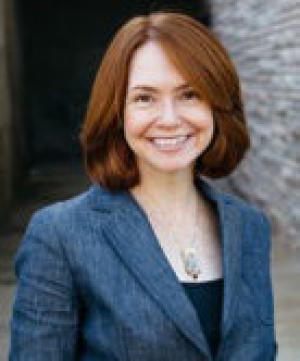
What simple gestures and accommodations at the end of a semester can lighten the load without compromising teaching and learning? Educators expect waning energy as a semester and academic year conclude. Students are overwhelmed trying to finish overdue assignments, final projects, and exams. Faculty are at the breaking point with grading, administrative tasks, and work/life balance. While student energy for learning flags, most faculty tap into their very last teaching reserves to end courses in the best possible spirit. This normal rhythm of attenuating energy is intensifying in the Covid-19 crisis. End of year celebrations like graduation are not there to provide momentum, needed affirmation, and closure. Educators have become a last line of continuity and support for increasingly vulnerable students. We are teachers turned life-coach, counselor, parent, and pastor. All the while, grief and loss are mounting on every side. Here are four simple ways to lighten the teaching and learning load to finish well: Take a hard look at any remaining assignments left in the semester. Chances are, only one or two assignments are crucial assessment indicators for final grades. In one of my courses, it is a final exam. In another, it is an accumulative writing project. Other smaller-scale learning assignments that support student engagement and course tracking won’t impact an overall course grade to any significant degree. In the last few weeks of teaching, be transparent about which few assignments are crucial to finishing well in order to lighten the teaching and learning load. In one course, I’ve made other assignments optional or extra credit. In another, I’ve made select assignments pass/fail. Options and clarity help students make informed decisions about where they should focus their waning energy, and faculty can save significant time doing less low priority grading. Diversify ways an assignment can be submitted. In one of my courses, students are required to write a formal film review. I’ve offered them the alternative of submitting a slide presentation with audio narration. Or they can choose a creative project connecting a film’s themes to the challenges of Covid-19. Different choices allow students to meet assignment objectives with less fatigue and anxiety or less intensive editing help from remote support services. Including opportunities to connect with Covid-19 fosters learning engagement and helpful conversations in their life circles. Students reveal surprisingly diverse and creative communication skills when modes of presentation are flexible. And diverse submissions make the drudgery of grading … almost … fun. Allow students to partner with peers on assignments. In one of my courses, students were writing individual reviews on one of three books to complete the semester. Fifteen papers to write, fifteen papers to read and grade. I adjusted the assignment and asked students reading the same book to submit one review written collaboratively. They divided tasks and wrote with improved shared insight while bolstering their peer-to-peer relationships weakened by less classroom interaction. Overall, shared grades were higher, everyone benefited, and I graded 3 book reviews instead of 15. Most important: reassure, reassure, reassure. Students need a strong ongoing word of encouragement to finish well. Let them know expectations and goals are shifting and simplifying in response to Covid-19. I remind students at every possible moment that their singular task is to stay engaged in course learning to the degree they are able and maintain good communication about their circumstances and needs. In return, it is my responsibility to make sure they have every possible opportunity to finish their courses well. Reassurance means hosting conversations on Zoom or other discussion platforms about specific challenges or griefs impacting students’ lives. Reassurance means reminding them that, even in very uncertain times, they have value and gifts and a future. Reassurance means sharing our passion for our area of study and its resourcefulness during a pandemic. Reassure, reassure, reassure. It is less time intensive than grading, and it will help students reach the finish line with wellbeing in mind. Teaching and learning are life-giving and can be a lifeline. Though our energy is low, and our grief is high, we can do some simple things to ease the load and finish well.

On October 22, 1939, six weeks after World War II had broken out, C. S. Lewis preached to a large crowd of Oxford University students, who were wondering what the point of the academic life might be at that time of international emergency. His address was titled, “Learning in War-Time.” My meditation this afternoon will be much shorter than Lewis’s great sermon, and to some extent dependent on its content. But in view of my present audience and the current world situation, I’m flipping the focus and the title. I’m calling this, “Teaching in Plague-Time.” Speaking as a teacher, I’ve been haunted since the coronavirus pandemic broke out by two rather strong fears. Maybe you have, too. I want to say a few words about each of these fears and to encourage us to face and conquer them. My first fear is that I won’t be able to teach effectively this quarter given that I’ll be using technologies I haven’t yet mastered. I’ve been feverishly revising my PowerPoints, glumly redesigning my Canvas sites, and fiercely cursing the intricacies of Zoom and Panopto. Countless times I’ve asked myself, “How can I possibly teach under these restrictive conditions? How will I ever figure out these complicated programs?” As a teacher, I’ve always been the “sage on the stage,” not the “guide by the side,” but these days I feel more like the “rube on the tube.” I feel silly wearing headphones. I fumble with the Zoom controls. I look at the screen instead of the camera and realize I’m watching myself looking away from myself. Understandable as this fear of pedagogical failure may be, it springs from a deeper source than shame for my technological ineptitude. It springs from the subconscious assumption that my professorial persona is more important than the intrinsic value of the subject matter I am called to teach, more important than the spiritual and intellectual needs of my students. This is more than wrong. It’s sinful. My performance anxiety exposes the vanity that lurks beneath my ineptitude. My conscious fears may subside as my competence improves in coming weeks. But I must repent of my need for my students’ admiration. If you’re in the same boat, maybe these emergency measures will give you, too, an opportunity for spiritual healing. My second fear is that the material I will be teaching this quarter will seem wholly irrelevant to my students given that it seems so far removed from the pressing needs of our time. What have the decrees of the Sixth Ecumenical Council to do with the shortage of ventilators and facemasks? Am I doing no more than offering them a brief diversion from the daily news, or feeding their hope that things will soon be back to normal, or contributing my mite to the completion of a credential they need before venturing into the “real world”? This second fear springs not from my vanity, but from my tendency to forget what Christian higher education is for. Here Lewis’s sermon is very helpful. His audience worried that it was unethical to pursue their studies while Hitler was gobbling up Europe. They assumed that the world situation had changed the academic situation. Here’s what Lewis told them: “The war creates no absolutely new situation; it simply aggravates the permanent human situation so that we can no longer ignore it. Human life has always been lived on the edge of a precipice. Human culture has always had to exist under the shadow of something infinitely more important than itself. If [people] had postponed the search for knowledge and beauty until they were secure, the search would never have begun. We are mistaken when we compare war with ‘normal life.’ Life has never been normal.”[1] Was Lewis minimizing or trivializing the dangers and disruptions of the political situation of his day? No. He was remarking on the ontology of human life as such. True, as Heraclitus taught us, “All things are always changing.”[2] The only constant is flux. And at the surface level, a great many things were changing in 1939, very suddenly and very alarmingly—just as they are today. But if we view human life through the lens of the Christian gospel, this pandemic “creates no absolutely new situation” for us, any more than war did for Lewis and his students. “It simply aggravates the permanent human situation so that we can no longer ignore it.” Yet the pandemic does create a fresh opportunity for us to see the real point of what we’ve been doing all along. It is to engage in, and to invite our students to engage in, “the search for knowledge and beauty.” This search is not an irrelevancy or a distraction. It is an end in itself, an intrinsic good. To be sure, current events provide riveting illustrations of timeless principles and new opportunities for the practical application of those principles. We rightly want our teaching to be “relevant” in this time of worldwide pestilence. Yet there is nothing more irrelevant than relevance, if “relevance” is nothing more than a kneejerk reaction to the immediate and the ephemeral. P. T. Forsyth put it this way: “If within us, we find nothing over us, we succumb to what is around us.”[3] As Christian educators, we must take account of what is changing “around” us, lest we fail to respond wisely and creatively. But as Christian educators, we must not forget what is “above” us—the eternally Good, the abidingly True, and the enduringly Beautiful. The quest for the three great transcendentals is the ultimate aim of all higher learning, as mediated through the particularities of our various disciplines. They are the guises in which God becomes manifest “within us,” and lifts us from our sins and sufferings. And it is our task and privilege to put our students (and ourselves) into daily contact with them. Thus, it is precisely by doing our workaday job as scholars and teachers, as well as we can, that we bring steadiness, sobriety, wisdom, patience, and courage into the grim urgencies of the hour. [1] C. S. Lewis, “Learning in War-Time,” in The Weight of Glory and Other Addresses (San Francisco: HarperCollins, 2001), pp. 47-63. [2] Plato, Cratylus 402A. [3] Peter Taylor Forsyth, Positive Preaching and the Modern Mind (London: Hodder and Stoughton, 1907), p. 47.

I was flailing. I was trying to show my students the different features of the videoconferencing tool Zoom that we’d be using synchronously for the rest of the semester, but I didn’t know how to share my computer screen in such a way that would show Zoom itself. Zoom kept hiding. It was our first day back, and I was feeling frustrated and flummoxed. It was not my best moment as a teacher. Or was it? Many of you may be familiar with the work of Carol Dweck. In her book and professional talks posted online (like this one or this one), she describes two types of mindsets: fixed and growth. A fixed mindset means that students believe their qualities, like intelligence, are innate, unmalleable, carved in stone. I get this from students a lot: “I’m just not a good writer,” as if writers come out of the womb good. (Anne Lamott has something to say about this in her brilliant essay, “Shitty First Drafts,” which I’ve assigned in every course I’ve ever taught.) I get the impression that many of my colleagues think the same about teaching: You’re either a good teacher or you aren’t. But those with a growth mindset believe that abilities can be developed over time, through practice and effort; they don’t shy away from challenges and failures because those are opportunities to grow, rather than revelations of unchangeable imperfections best left hidden. Covid-19, and all the uncertainty and upheaval resulting from its spread, is giving us an opportunity to embrace a growth mindset as educators. How can we do so? One of my approaches has been to demonstrate a spirit of curiosity and openness with my students. I had never used Zoom breakout rooms before three weeks ago, but I wanted to try them out with my newly online class. I thought these rooms could help students do the partner and group work they were used to doing face to face. So, I said, “Hey, I’m going to try something out here; let’s see what happens.” I didn’t know what would happen. We were going to find out, together, as co-learners. I remember, a couple summers ago, I was reading so many books from a certain section of the bookstore that my buddy asked me, “Are you just sitting around reading quasi-philosophical self-help books and should I be concerned?” “Yes and unclear” was my reply. One author I was fortunate to come across during this time was Brené Brown. In The Gifts of Imperfection, she introduced me to a phrase I love: “an aspiring good-enoughist.” Many of my friends are drowning right now in self-imposed perfectionism. One spent hours editing a short recorded lecture before posting it on our LMS. If perfection is our aim, however, we may shy away from the very opportunities that would stretch us and challenge us, forcing us to grow—instead opting only into narrow situations that showcase the talents, skills, and knowledge we already possess. We don’t have to be perfect to be good teachers. We don’t have the time, energy, or bandwidth anyhow. Let us all, instead, be good-enoughists. And, while we’re at it, let’s allow our students to see that’s what we’re doing; after all, they look to us as role models. When my daughter was just a baby and she would hear a loud sound—a motorcycle, a lawn mower, a fire alarm—she would look, not toward the noise itself, but up at me. She gauged how she should respond to the world by how I was responding; if I remained calm, she did too. I think it’s the same with students. If we respond to our inevitable (and they are inevitable) mistakes with histrionics or apologies, students will think something bad has happened and react accordingly. If we take our mistakes and failures in stride, and laugh them off, students just might too; they are generally pretty good sports. Failure, of this kind and on this scale, doesn’t have to be a big deal. (If nothing else, the global pandemic has given us all a sense of perspective.) Now is the time for us to model, good-naturedly, what life-long learning looks like. A final key, for me, in embracing a growth mindset, has been to show what learning after a mistake looks like. The next class session, after the Zoom debacle, I came back and shared with my students what I had discovered. After doing some quick Google searches and consulting Zoom’s very helpful tutorials, I could share my screen in such a way that Zoom itself would show. “Look!” I excitedly said. “Look! I’m doing it!” I’m not sure they were as excited as I was, but they had gotten to see my failure . . . and then they got to see the growth that resulted from it. They saw me, their professor, gain a new skill, just as I was asking them to do over the course of our time together. Humility is hard, and may seem altogether too rare, in the academy. Now is the time to embrace it. We’re all learning, we’re all growing. This pandemic is just making it more obvious.
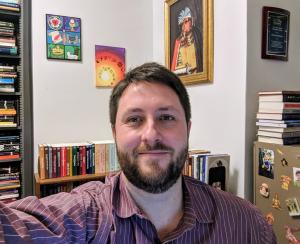
Like many parents of small children, I responded to the COVID-19 crisis by subscribing to Disney+. One of my first dives into animated nostalgia was with the Pixar short Presto, which initially preceded showings of the 2008 masterpiece WALL-E. I watched with bemused horror as the magician, resolute on performing for the packed house, ignores the obvious pleas of his rabbit for a simple carrot and experiences greater and greater injury as he tries to coerce the rabbit to do his bidding. I was glad my children were already asleep. Before long, I was thinking about how some of my own attempts at improving my instruction over the years might sadly resemble the flailing and desperation of the magician Presto. Our students are hungry, and we risk failing them–and getting hurt in the process–if we lose sight of this. They are hungry for connection, for community, for security, and yes, for learning. I want to feed their hunger, to give them the carrot that will hold them over until something more substantial is available again. But now that all our interactions have been digitized, I have found myself a bit adrift, realizing that much of my impact in the classroom depends on a persona that I perform. The shift to remote teaching and learning has forced me to reckon with my lingering assumptions about students as an audience. I have always seen myself as a lifelong learner, and a fellow-learner with my students. But now, more than ever, I have become aware that I still often treat students like an audience who has paid good money for a seat and impatiently await my magic making. But, like the animated magician who pulls off his trick only when he finally listens to his rabbit, I am realizing that in this crisis teaching and learning works best when students are full partners in the enterprise. My Presto moment might just be responsible for a lasting shift in my pedagogy toward students as collaborators, even co-conspirators. My religious studies courses serve exclusively general education students, so I cannot depend on students’ background knowledge or preexisting curiosity to energize the classroom. For students without personal connections to any religious practice or traditions, finding religious cultures interesting often depends on finding me interesting. I found in my early years as a full-time instructor that sharing my inner “history nerd” captured the imaginations of only some students. Watching a video tape of myself teaching was a formative moment in my professional development during my first semester on the job. My best attempts at good, provocative, open-ended questions fell flat, and I could see on tape how the intellectual energy I felt did not come through for the students. So I worked on conveying more excitement through energetic physicality, modeling inquiry not merely through thoughtful questions, but also through emphatic gestures and wide variations in the volume and tone of my voice. I stopped being afraid to say–loudly–“What?!” to my own attempts at interpretation. Students responded. Visits to my office hours increased. Course evaluations slowly improved. A persona that initially struck me as a farcical performance became less forced, more authentic. I am sure that I improved other skills as an instructor, but the energy I put into the performance seems to have opened up my creativity as well as my sensitivity to students. To perform in this way forced me to imagine the intellectual and emotional position of my students. It made me seem more vulnerable. It helped me make stronger connections to students. Demonstrating how willing I was to challenge myself opened up new possibilities for students to challenge me, too, and to ask potent questions about religious texts. My new instructor’s persona did not suit all pedagogical circumstances, but it became an important tool in my belt. Just as important, this new professorial habitus made me feel differently about teaching, in ways that improved my instruction in other ways, some measurable and tangible, others not. Overnight, Covid-19 took away my stage, my audience. Initial feedback suggested that nearly 1/3 of my students new quarantined lives would not accommodate a steady schedule of video conference discussions, so I opted for asynchronous approaches. Optional video office hours gave me some opportunities to speak with students face to face, but not every student would “attend” or watch the recordings. I found I could not fit all my expressiveness into a small box on a tablet screen. Discussion forums facilitate authentic discussions of our shared texts, but it becomes impossible to gauge quickly the reactions and comprehension of thirty students to a 100-word follow-up post on one thread among dozens in a forum. But I cannot, like the magician Presto, continue to perform and prestidigitate for an audience because that audience has more important things to worry about under the present circumstances. If learning is to happen now, we must be even more attentive than ever to what students need. On the one hand, this has meant above all simplifying, paring away inessential elements in order to get to the core of my objectives. I have cut down the length of reading assignments; no longer convinced that there is virtue inherent in testing students’ ability to find the important passages in a challenging text, only then to discern meaning in them. I have cut down discussion questions from four of five to one or two as students are discussing asynchronously need a focused conversation so they aren’t talking past one another. But it has also meant jettisoning performance in favor of collaboration, in and through the humble discussion forum. In other words, I have been challenged to accommodate and facilitate students’ intellectual agendas rather than skillfully molding them to my own. This means asking authentic questions, but it also means responding authentically. Without my in-person performance of classroom leadership and inquiry to subtly redirect, I have had to be more honest about when an answer is off topic and needs clarification,. Students’ links to videos or blog posts on a topic, drawn from corners of the Internet I never visit, have forced clearer and more effective conversations about evaluating sources (and about the differences between scholarly and other sorts of discourse). I have embraced the leveling effect of having my replies treated the same way as my students’ by a democratizing Moodle interface. And I have shared my genuine surprise, sadness, laughter, and joy at the insights and compassion students have expressed in plain-text prose of 100 to 250 words. In response to the crisis, I have stopped performing and started dialoging more thoroughly than before. It is an experience that I hope I will be able to translate back into face-to-face instruction, whenever that should return.
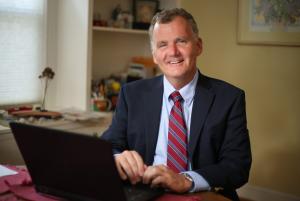
During a crisis, we need trustworthy practices. In challenging circumstances, when our bodies are anxious and tense, learners and teachers need a sturdy undergirding to navigate life as thoughts race and emotions fluctuate. At least, that is my view as a pastoral theologian. Ten years ago, Denise Dombkowski Hopkins and I published a book entitled, Grounded in the Living World: The Old Testament and Pastoral Care Practices (Eerdmans, 2010). We briefly explored the unfortunate use of platitudes in ministry; phrases such as ‘it could be worse,’ ‘she is in a better place,’ ‘look on the bright side.’ Clichés and platitudes are superficial thoughts and comments that stifle further exploration as they reduce complexity to simplicity. Proof-texting with the Bible also functions as a platitude. People are not comforted and much harm can occur through the use of these seemingly innocuous remarks. In a time of crisis, we realize how unsatisfying a platitude can be. A few weeks ago, I was interviewed for a podcast on the topic of care during a pandemic. I responded to a question about “rethinking” leadership practices by suggesting we need not “over think.” A former student and current pastor wrote saying how much he appreciated the passing reference. We need practices that can hold us together since many people are, in his words, “operating in a type of panic mode that is causing an overload to our systems.” Platitudes such as ‘this, too, shall pass,’ and ‘God is bigger than this virus’ serve as knee jerk thought responses that prematurely call the question rather than open the conversation. Recently, I was listening to recording of Joko Beck, founder and teacher at the Zen Center of San Diego. Joko died in 2011, but her teaching lives on. She had a no-nonsense, platitude-free style. I became familiar with her teaching while a Ph.D. student in Claremont, California. I relearned what I had heard many times before and seek to communicate in my pastoral care classes: meditation practice helps to release the thoughts that loop in the mind. Meditation is a kind of unloading of the system. Contemplative prayer and other spiritual practices serve a similar purpose: to let go of the thoughts and tap into God’s presence. Psalm 46 calls for calm amidst a creation in chaos and a world in turmoil. “Be still, and know that I am God! I am exalted among the nations, I am exalted in the earth” (v 10). “Be still” means “to stop, desist, don’t do anything.” That’s the heart of spiritual practice: to be still in a world turned upside-down. Even if you cannot be calm, I tell students, at least practice being less anxious than the people in your care. The world teaches us to keep pushing the “thinking” panic button, but pastoral leaders need to model a healing alternative for showing up in the world. That alternative allows for the embrace of our whole experience regardless of whether we are seething in anger at injustice, fearing for others’ and our own lives, grieving losses, or reeling with anxiety. Embodied spiritual practice makes space for it all. I have discovered it easier to foster such practices in the online class. I find myself teaching more boldly. Students can engage freely without being self-conscious. They get credit whether or not they engage the practices, as long as they write a brief reflection. Most students do all of them; a few opt out on occasion. The evaluation method signals their inner authority is what matters. Some probably still write to please me. Overall, though, I trust students to learn through their own meaningful activity. The abrupt shift to online teaching is simply a mirror of a new unknown reality into which we have all been catapulted. I know myself as a co-learner with class participants. I engage the practices, too. I know that being with fear and anxiety is immensely difficult as agitation stirs in my body. I know being present in and to experience takes effort. Yet, I also know from years of practice, that being still puts us in touch with the energy forces at work within and around us. All is quiet in the eye of the hurricane, but getting there/being here is a challenge. Platitudes run roughshod over experience. They put a superficial happy face on matters. Yet another possibility exists. The poet Rumi muses: “Out beyond ideas of wrongdoing and rightdoing, there is a field. I’ll meet you there.” Spiritual practice allows for holding the both/and together instead of denying the negative or forcing the positive. It is the field of being and heart of pastoral caring. Suggested spiritual practice drawn from various traditions: • Sit in a comfortable position • Notice and let go of all platitudes/thoughts/feelings • Focus on your breath and/or sense your heartbeat • Acknowledge what’s happening in your body • Be still for a while I’ll meet you there in the stillness.
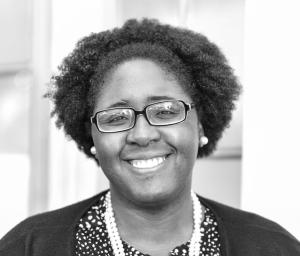
The Pandemic Amidst shelter-in-place orders and the hasty swap of physical classrooms for virtual learning spaces, it is clear that Covid-19 is being taken seriously by institutions of higher learning; daily, they are learning to re-shape themselves. Summer courses are going virtual as the duration of national isolation measures are still unknown. It is becoming more likely that a society in flux will delay the return of a “normalized” education system as distancing may continue well past the summer months.[1] Educators learn a number of lessons when thrown into pedagogical precarity and novel teaching circumstances. The first is not to master Zoom’s many features, nor protest the abrupt pedagogical transition,[2] but to closely examine what this moment reveals about their students.[3] This has been the case for me. The first week of teaching-online, the disposition of my class felt strong. Too strong. I questioned the fortitude emanating from many of them—the majority Black. I knew they were experiencing the same pandemic as the rest of the institution. Their tenacity was both admirable and alarming. Many of my students were ready to dive into the new format and keep going. This was their habit; they willed themselves to keep moving because they have always had to, because they have never had the choice of being considered “enough” to have a different response to crisis. No matter the circumstance, even a global pandemic, many had come from a culture of persistence and knew how to respond dauntlessly to tragedy. It was stitched into the fabric of how they knew how to be. The Predisposition This display of scholastic perseverance is racial, historical, unjust, and the aftershock of generational trauma. Many of my students have normalized being in a perpetual state of crisis. But the danger in this is that they rehearse how to feel and be; they do not quite let in what they actually feel, how they actually want to be in this moment. This barrier to them feeling the fullness of their personhood and humanity needs to be toppled. The truth must be named: teaching minoritized students during a pandemic is drastically different than teaching privileged ones. In my class’s case, all of my Black students had a "making a way out of no way" mentality. They assumed a pandemic could be added to the list of traumas they have experienced, witnessed, or accepted as their legacy. The idea of suffering towards one’s success has been concretized in their imagination as descriptive of what their lives should entail. Black students are used to trauma in every area of their lives, including education. Although this pandemic is significantly disrupting their lives, their mentality is to make it work, find another way, hustle, suck it up, and take it on the chin, rather than lament, rest, and most importantly, ask for the leniencies, grace, and benefits other peers are requesting. Though in class they argue passionately for equity, when it comes to tangible opportunities, many Black students do not feel it worth asking for what others are receiving; history has told them their asking is futile. This pandemic is uncovering how truly disturbing the disparities are. Historically privileged students unaccustomed to this level of stress exist on a completely different ontological plane than their minoritized peers. For them, extreme stress is the norm. For privileged students, extreme stress is a disruptor. Minoritized students adopt the “make a way out of no way” posture because hardship is not new, is not jarring. This should alarm instructors. For too many minoritized students, pandemic trauma feels no different in their bodies than the other traumas they have experienced on a normal basis. Responses from privileged peers can then be infuriating for weary-but-way-making-minoritized students. They have never had the option for an entire educational system to respond mercifully or so drastically to their fiscal, familial, or personal traumatic experiences. Mercy in the time of a pandemic, to some minoritized students, can look and feel like privilege. A Counter-Response Educators need to encourage their students who have experienced historical neglect to allow themselves to feel the weight of this moment, to not tirelessly fight through it. We must grant them permission to reimagine strength and productivity. We must grant the humane treatment they have become resentful seeing granted to others and not themselves. We must help them understand that “success” is in the fullness of feeling the moment and letting our bodies, minds, and souls react how they want. We must, in our own respective platforms, change the metrics of achievement to focus less on succeeding, and more on simply arriving.[4] Our job is to impact how our students receive information; what greater place to begin than within. [1] Ed Yong, “Our Pandemic Summer,” The Atlantic. https://www.theatlantic.com/health/archive/2020/04/pandemic-summer-coronavirus-reopening-back-normal/609940/ (Accessed April 17, 2020 [2] Rebecca Barrett-Fox, “Please do a bad job of putting your courses online,” Rebecca Barrett-Fox (blog), Accessed April 17, 2020, https://anygoodthing.com/2020/03/12/please-do-a-bad-job-of-putting-your-courses-online/. [3] Nicholas Casey, “College Made Them Feel Equal. The Virus Exposed How Unequal Their Lives Are,” The New York Times. https://www.nytimes.com/2020/04/04/us/politics/coronavirus-zoom-college-classes.html (Accessed April 17, 2020). [4] Paul Ollinger, “Your Only Goal is to Arrive,” Forge by Medium. https://forge.medium.com/to-survive-the-quarantine-change-your-metrics-e345d79be14b. Accessed April 17, 2020.

An Interview assignment is on my syllabus for my Critical Thinking and Communication class (Gen Ed, required of all sophomores, inquiry based). My course title/inquiry is "A Good Life: What is it? How does one live it?" As we pivoted to remote courses in mid-March and as I began to convert activities and assignments, I wondered about keeping the Interview. How to talk about a good life when life doesn't look so good? As it turned out, the assignment worked. I received some of the strongest, most engaging submissions I've ever read. As one student said, "We (her grandmother was the interview subject) had time together around the kitchen table. She loved my questions and she was tickled to help me with a paper. But I was the lucky one. I heard stories I had never known. And now they are recorded on my phone. What a treasure." Click this link to view the vlog.

One of the most significant challenges of teaching exclusively online is the balance between synchronous and asynchronous teaching and learning times. I have found a balance to be necessary, as not all material is conducive to engagement during an eternal, synchronous, live Zoom meeting. While we may feel pressure to spend a certain amount of time on synchronous meetings in order to demonstrate academic rigor, the fact is that a lot of learning does not necessarily take place there, unless the time is highly structured and engaging for everyone. First, we need to think through which learning tasks are best achieved asynchronously. Which tasks are relatively simple to execute, best done at one’s own pace, and purposeful toward achieving a greater learning goal? While reading articles and books certainly fall into this category, so do creating video responses, contributing to asynchronous discussion boards, and taking short, open-book quizzes to check for understanding of the basics. I recommend synchronous sessions only those tasks which cannot be completed asynchronously to the same effect. These sessions should be a time for students to share their discoveries from the asynchronous time, ask questions of each other and the instructor, and they should not be too long. I find a structured discussion achieves these ends, keeping everyone engaged while digging deeper into a reading assignment. The blend of the synchronous and the asynchronous creates a rhythm, something I think each of us craves in this uncertain time. The following rhythm has been working for me and my students as we adjust to learning exclusively online. In short, the rhythm goes like this: Begin a reading assignment, along with a reading guide, like this one. One, asynchronous video check-in via FlipGrid with initial thoughts about the reading One, synchronous online “fishbowl” discussion during the week In the live, online “fishbowl” style discussion, some students participate in the conversation (inside the ‘fishbowl’), while others observe, take notes, or present different material. Here’s how I structure the discussion, which could work on any video chat platform: 🖐️🖐️ Role: Live discussion participant Live discussion participants answer questions asked by facilitators and ask questions of each other, as needed 🤠🤠🤠 Role: Facilitators Facilitators create questions based on the text and ask them of the group in the order that seems most appropriate. Gather questions on a common document prior to the conversation. 📕📕 Role: Vocabulary Vocabulary leaders prepare Google Slides featuring four vocabulary words from the text, along with their paragraph numbers and definitions; present live before the discussion. 📚📚 Role: Background research Background researchers create Google Slides featuring information about the author and publisher of the reading. Include at least nine facts. 🤐 📝 Role: Note taker Sample notes pages Role: Live Kahoot Maker The live Kahoot maker will listen carefully to the conversation and create a Kahoot for everyone to take immediately after the conversation. The winners will get a prize!! There are many ways to modify this structure—perhaps hold two sessions with micro-groups of people or require different elements from each role. It’s my hope that a highly structured online conversation will clarify everyone’s role in synchronous meetings, encourage deep, sustained student engagement with the material, as well as surface new learning that can only come about from community discussion.